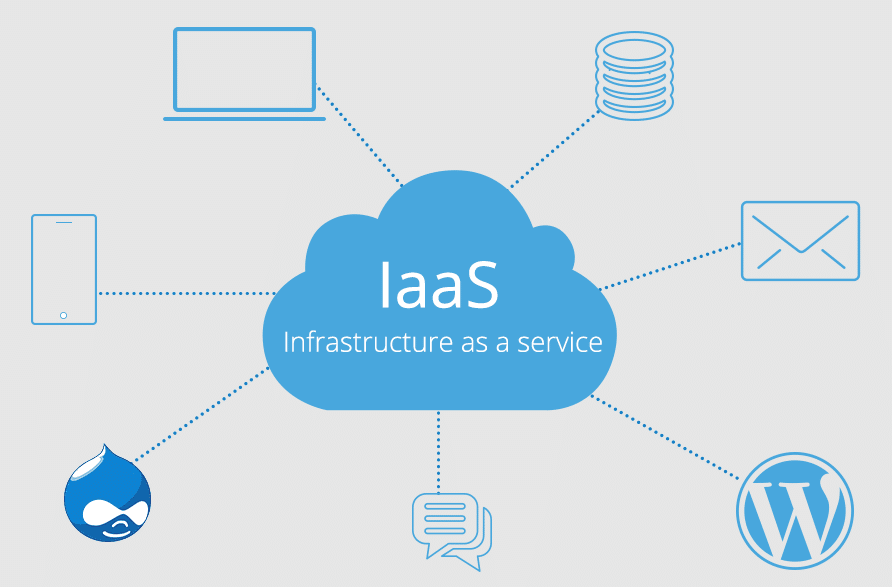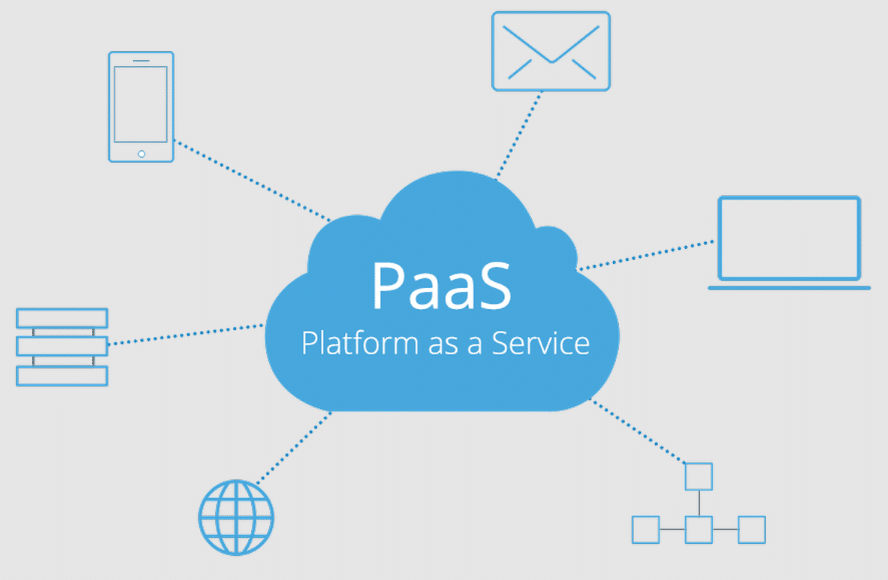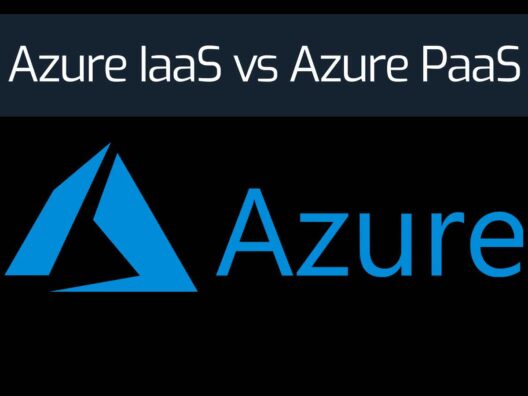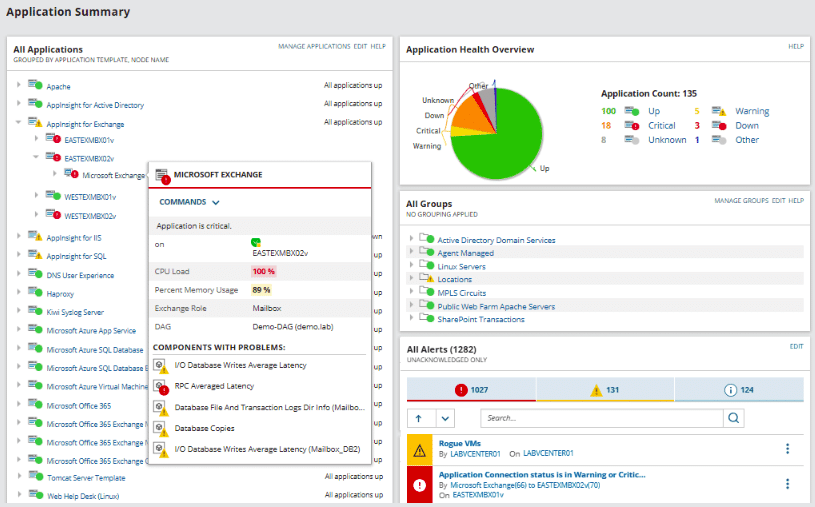With the advancement in technology, many small and large-scale sectors are moving to use cloud services. Using cloud computing services helps users access information and applications whenever and wherever they want to over the Internet. Also, it can add more flexibility and efficiency to various organizations and on-premises IT environments. Microsoft Azure is one such popular cloud computing service that helps cut down on the high cost of hardware and provides excellent services.
Microsoft Azure offers the following cloud services:
- Software as a Service (SaaS)
- Infrastructure as a Service (IaaS)
- Platform as a Service (PaaS)
These cloud computing services are used for performing analysis, virtual computing, networking, storage, etc. It is one of the fast, flexible, and affordable platforms used for delivering hosted services over the Internet. The cloud computing platform also uses IaaS and PaaS to build, deploy, and manage hosted applications. Let’s compare and discuss Infrastructure as a Service (IaaS) and Platform as a Service (PaaS).
What Is Microsoft Azure IaaS?

Infrastructure as a service (IaaS) is a cloud computing service that hosts infrastructure on the cloud rather than the on-premises data center. It comprises all the storage and networking resources essential to supporting applications and servers on virtual machines. These services are excellent for organizations as it helps save time, energy and reduce maintenance of on-premises data centers.
Further, Microsoft Azure IaaS helps perform enterprise tasks and operations efficiently. Thus, reducing human error.
You are no longer required to buy and manage physical servers or datacentre infrastructure as Azure manages it all. However, you might need to purchase, configure, install, and operate a few elements of IT infrastructure. Some of these elements are using systems, databases, and development tools. You might also require configuring antivirus software, installing patches, and other tasks. Also, you may have to spend a bit extra on trained engineers to maintain these platforms, meet legal and compliance requirements.
The cloud computing service provider is highly beneficial for businesses. The platform helps gain real-time business insights, build web applications, run high-performance computing, and host websites.
Further, it also supports in development and testing of new environments. You can create a backup and store it with Microsoft Azure IaaS. It is one of the least expensive methods to run an application or workload to private and public clouds.
Furthermore, Microsoft allows deploying web apps on IaaS faster.
Cloud computing services come in three pricing options:
- Pay-as-you-go You do not require any upfront payments. Under this method, the user needs to pay charges based on usage. Thus, no wasted resources and long-term commitments. IBM, Hewlett-Packard, AWS use this pricing model for IaaS service.
- Reserved machines The pricing model allows organizations to pay in advance and use the Azure IaaS services for one or three years in a specific region.
- Spot pricing Another pricing model under which users pay only for a spot instance. If your price equals or exceeds the current spot price, you can purchase and run the instance or less it will be terminated. This model allows the cloud provider to sell unused capacity at deep discounts.
One can modify these Azure IaaS pricing options as per their business needs. Also, it ultimately lies in the user's hands to stop and start the Azure IaaS service. Get access to deliver IT resources to any location faster and enhance security and performance with Microsoft Azure IaaS service.
What Is Microsoft Azure PaaS?

Platform as a service (PaaS) is another cloud computing service that helps build, test, deploy, manage, and update web applications without maintaining the cloud infrastructure. It focuses more on custom applications rather than hosting infrastructure. With Platform as a service (PaaS), you can access the essential resources from the cloud service provider using the pay-as-you-go pricing model. The cloud service also comprises storage and networking resources. But, it also includes additional resources like development tools, DBMS, business intelligence (BI) services, middleware, and more.
It helps create a framework for the developers where less coding is required. The Platform as a service supports easy customization of cloud-based applications. Further, it helps in performing analysis and mining data, gaining better insights, predicting outcomes, and making better business decisions. Furthermore, it also supports security and scheduling to enhance application performance.
There are multiple benefits of using Microsoft Azure Platform as a service (PaaS). You do not require more skilled staff to develop or customize cloud-based applications. The in-built PaaS development tools comprise pre-coded application components. Over time, it has become one of the popular Azure cloud services with its capabilities to access services on the cloud. You can group with other development team members in remote locations over the Internet. Thus, improving the end-user experience.
The platform only supports the pay-as-you-go pricing model. It offers users the license by either the hour or month, covering fast-action data transfer features and opportunities to integrate with various operating systems.
This Cloud computing service can be configured in three formats:
- As a Cloud Service This format involves minimal configuration options. It helps supply servers, operating systems, middleware, database, networking, and more services to develop and host a customer application.
- As a private service It controls deployment and operations on a private infrastructure behind a firewall while meeting strict security and privacy requirements.
- As a software It controls deployment and operations on public infrastructure. For example, AWS.
Large B2B organizations often use Microsoft Azure PaaS to integrate on-premises applications and data in hybrid cloud environments. SnapLogic, Informatica is a few companies that use Microsoft Azure Platform as a service (PaaS).
Head-to-Head Comparison: Azure IaaS vs. PaaS
| Basis of Comparison | IaaS | PaaS |
|---|---|---|
| Abbreviation | IaaS stands for Infrastructure as a service. | PaaS implies a Platform as a service. |
| Definition | A cloud computing service that hosts infrastructure and provides networking, commodity data storage, routing service, load balancing, and more to support applications and servers on virtual machines. | A cloud computing service that helps build, develop, configure, and operate web applications without maintaining the cloud infrastructure. However, it also includes network and storage resources but focuses on managing custom applications. |
| Usage | Most commonly used for installing the database, applications, operating systems, and setup runtime. | PaaS play a key role in the development, deployment, updating, and testing of applications. |
| Benefits | Helps reduce hardware costs. Further, helps reduce buying, maintenance, and support infrastructure expenses. Further, helps in hosting websites, building web applications, running high-performance computing, and getting business insights. | It provides pre-coded application components and additional features like Directory service, Workflow, configured database, etc. Overall, these help save developer's time. |
| Real-time Usage | Handle and maintain large-scale datasets. | It involves ultra-fast devices such as supercomputers |
| Applications | Configure and host infrastructure on provided memory or hardware. | Development, deployment, and testing of web applications. |
| Advanced Security | The security features are based on the user’s infrastructure. | Microsoft Azure PaaS is highly secure. |
| Scale | It is based on the User virtual machine | It is a highly scalable automated system |
| Monitoring | It requires you to monitor manually. | The monitoring is performed by Azure and notifies or triggers users if any changes are made. |
| Built in Intelligence | The feature is not present. | The feature is available. |
| Management | The user needs to install and configure the development platform. | The user needs only to manage the application as the development and deployment task is performed by Azure. |
| Development Tools | Organizations can buy and maintain development tools from the start. | Users need to pay for the development tools when they need them. |
| Pre-built application components | Do not comprise this feature. | It comprises these features, which help save time in the development and deployment of applications. |
| Pricing Model | It supports three pricing options: • Pay-as-you-go • Reserved machines • Spot pricing | It only supports the pay-as-you-go pricing model. |
| Manpower | You require trained engineers to maintain these platforms. | It can help increase the development speed without any new staff. |
SolarWinds Server & Application Monitor – FREE TRIAL
SolarWinds Server & Application Monitor is one of the popular monitoring tools for Azure IaaS and PaaS and the one we recommend. The tool was designed to monitor applications and infrastructure and get better insights. No matter whether your applications are running on-premises, in the cloud, or in a hybrid environment, the monitoring tool helps provide health status and its capabilities.
It helps visualize the performance of all on-premises and cloud-hosted servers and applications supported by these cloud computing services. The tool uses features like dynamic maps to visualize IaaS and PaaS metrics. Also, it helps get cross-stack correlation for all hybrid IT data.
SAM is built to deliver insights that may further help in optimizing Azure IaaS and Azure PaaS. One can also accelerate system troubleshooting with the help of SolarWinds Server & Application Monitor. It comprises various features that make it one of the best choices for monitoring Azure cloud computing services. The Auto-discovery tool feature helps in monitoring all essential Azure machines and containers. Further, the tools help reduce the time spent on troubleshooting, analyzing the performance, and communication.
We recommend choosing SolarWinds Server & Application Monitor over other monitoring tools as it has powerful capabilities and alerts before end-users and business services are impacted. The powerful tool also supports 1200+ application and systems templates that help discover application performance issues. For quick analysis, one can use intuitive dashboards and topology maps.
Website Link: https://www.solarwinds.com/server-application-monitor
Download: Click here for a fully functional 30-day free trial.
Final Thoughts
Microsoft Azure IaaS and PaaS are the two powerful cloud computing tools that help manage Azure's data center infrastructure, build, develop, configure, and operate applications. The Azure IaaS toolkit hosts infrastructure on the cloud and supports both on and off-premises elements. The Azure PaaS toolkit supports the complete application lifecycle and lists cloud-hosted server metrics only. Both cloud computing services are advantageous for an organization. They help in the fast processing of data, performing analysis, and more. Further, the PaaS services comprise various in-built features that help save developer’s time. However, the other cloud computing service IaaS does not comprise any such in-built features.
Thus, choosing between Azure IaaS and PaaS can be a tough call. Follow the above-listed points to compare the two cloud computing services and understand their role. To run your systems properly, we recommend it is best to maintain and keep both Microsoft Azure services.
To gain more benefits from the IaaS and PaaS systems, you can switch to using monitoring tools like SolarWinds Server & Application Monitor (SAM). SolarWinds Server & Application Monitor (SAM) is a powerful tool that plays a crucial role in monitoring Azure IaaS and PaaS cloud computing services. The reason to design SAM was to get accurate insights, update Azure IaaS and PaaS metrics, and visualize both computing services' performance in all environments. It also helps alert users if any changes are made. Using its advanced features, one can improve Microsoft Azure IaaS and PaaS performance and make better decisions.





